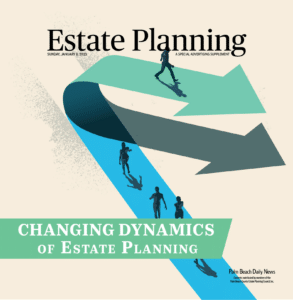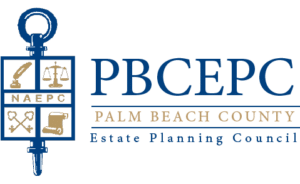
The patriarch of a family once said, “My father traveled on the back of a camel. I drive a Ford. My son drives a Ferrari. His son is likely to ride a camel.” He’s not wrong: studies show that most affluent families see their wealth dissipate within three generations. Although having significantly more wealth might stretch it a bit longer, hanging on to generational wealth almost always requires a well-designed plan.
Such a plan needs to be more than an instruction sheet on how to disperse financial assets. Of course, it must focus on how best to transfer the wealth, but it must also focus on how to transfer the wisdom and intellectual heft that generated that wealth. Without the secure and intentional transfer of wisdom, the legacy for the next and future generations is built on a shaky foundation.
Lisa McLeod, who wrote Leading with a Noble Purpose, posits that it is purpose that drives us, and when a group of people shares a purpose over time, their actions will be more thoughtful and intentional, leading to a more enduring and successful outcome. Though McLeod is writing for the business leader, her philosophy applies, as well, to those who become wealthy and wish to make their estates last in such a way as to benefit their great-great-great-grandkids and help them be in service of a greater legacy. This is to say: starting conditions matter.
What is a noble purpose, according to McLeod? It starts with your core beliefs. Ask yourself what the 5, 10, or 20 beliefs are that you have attempted to follow in your life that have made you successful. It requires time and diligence to distill one’s actions down to the core. Keep the ones you can defend, the beliefs you can really justify putting on the list.
Identifying and examining your core beliefs will help you arrive at your noble purpose. They act as pillars to support it. A belief that most people are good and want to be good combined with a belief that innovation advances humanity could lead to a noble purpose revolving around the support of entrepreneurism, as one example. Having a plan is good. But having an overarching reason for the plan, a reason that can be conveyed to others, that’s what makes the plan stick.
Much of the work of estate planning today is to explicitly state the wishes of the benefactor. With that as the mission, it is unsurprising when family wealth evaporates within a generation or two. A benefactor instituting a rigid plan runs the risk that the specific needs addressed become irrelevant within the intermediate term, making the legacy rudderless soon after its creation.
Through the adoption of a noble purpose, respect for the unforeseen becomes instilled in the plan. Instead of the goal being to write instructions and create legal buckets to move wealth to the next generation and their descendants, with a noble purpose, the objective becomes how to convey one’s purpose and entrust future generations to use the money to live that purpose.
Thinking of your core beliefs as beliefs and not, say, rules is important. With beliefs, humility is built into the system. Beliefs can and do evolve with time and new experiences. And as long as the noble purpose is well-established, evolving beliefs will actually provide longevity to the purpose, allowing it to be passed on in a more durable fashion.
The benefactor may find this flexibility uncomfortable, but it opens up opportunities for much stronger buy-in by future generations. The plan becomes a living legacy that allows for adaptation. And since rarely can the future be predicted with accuracy, establishing purpose and understanding the beliefs behind it allows future generations to fulfill the purpose in appropriate ways as time advances and circumstances change. The stronger and more honorable the purpose, the harder it is to disregard.
In the investing world, investors aim to build a well-diversified portfolio to lessen the chance of failure. A well-diversified portfolio consists of assets of different types. The differences are meant to bring non-correlation, but they do so with the mission of protecting and growing the overall portfolio’s purchasing power.
The same can be said for building a legacy. The multiple and different descendants of a benefactor are the “diverse portfolio” in this story. People will interpret and act on the purpose in unique ways. The noble purpose, and the foundational beliefs that support it, are the strategy and tactics. And the legacy is the outcome. The legacy’s strength and longevity rely on well-diversified individual views of the benefactor’s flexible and broad purpose.
“What you leave behind is not what is engraved into stone monuments, but what is woven into the lives of others.” – Pericles.
Joseph Hosler is a founder and managing principal of Auour Investments, a wealth management firm focused on the needs of families and institutions.
